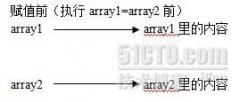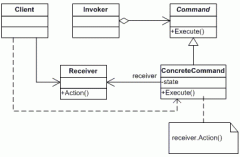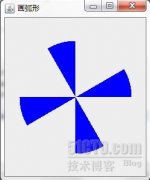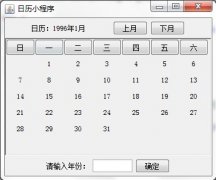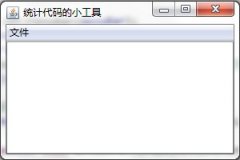Struts2 Lesson3: Parse for configures of struts.xml in commo
使用<include>标签重用配置文件
在Struts2中提供了一个默认的struts.xml文件,但如果package、action、interceptors等配置比较多时,都放到一个struts.xml文件不太容易维护。因此,就需要将struts.xml文件分成多个配置文件,然后在struts.xml文件中使用<include>标签引用这些配置文件。这样做的优点如下:
结构更清晰,更容易维护配置信息。
配置文件可以复用。如果在多个Web程序中都使用类似或相同的配置文件,那么可以使用<include>标签来引用这些配置文件,这样可以减少工作量。
假设有一个配置文件,文件名为newstruts.xml,代码如下:
为action指定参数
在struts2中还可以为action指定一个或多个参数。大家还记着struts1.x是如何设置的action参数不? 在struts1.x中可以使用<action>标签的parameter属性为其指定一个action参数,如果要指定多个,就只能通过逗号(,)或其他的分隔符将不同的参数隔开。而在struts2中可以通过<param>标签指定任意多个参数。代码如下:
<actionname="submit" class="action.MyAction"><paramname="param1">value1</param><paramname="param2">value2</param><resultname="save">/result.jsp</result> ……</action>
当然,在action中读这些参数也非常简单,只需要象获取请求参数一样在action类中定义相应的setter方法即可(一般不用定义getter方法)。如下面的代码将读取param1和param2参数的值:
packageaction;
importcom.opensymphony.xwork2.ActionSupport;
publicclassMyActionextendsActionSupport
{
privateStringparam1;
privateStringparam2;
publicStringexecute()throwsException
{
System.out.println(param1+param2);
}
publicvoidsetParam1(Stringparam1)
{
this.param1=param1;
}
publicvoidsetParam2(Stringparam2)
{
this.param2=param2;
}
……
} 当struts2在调用execute之前,param1和param2的值就已经是相应参数的值了,因此,在execute方法中可以直接使用param1和param2.
选择result类型
在默认时,标签的type属性值是“dispatcher”(实际上就是转发,forward)。开发人员可以根据自己的需要指定不同的类型,如redirect、stream等。如下面代码所示:
<result name="save"type="redirect"> /result.jsp</result>
这此result-type可以在struts2-core-2.0.11.1.jar包或struts2源代码中的struts-default.xml文件中找到,在这个文件中找到<result-types>标签,所有的result-type都在里面定义了。代码如下:
<result-types> <result-typename="chain"class="com.opensymphony.xwork2.ActionChainResult"/> <result-typename="dispatcher"class="org.apache.struts2.dispatcher.ServletDispatcherResult"default="true"/> <result-typename="freemarker"class="org.apache.struts2.views.freemarker.FreemarkerResult"/> <result-typename="httpheader"class="org.apache.struts2.dispatcher.HttpHeaderResult"/> <result-typename="redirect"class="org.apache.struts2.dispatcher.ServletRedirectResult"/> <result-typename="redirectAction"class="org.apache.struts2.dispatcher.ServletActionRedirectResult"/> <result-typename="stream"class="org.apache.struts2.dispatcher.StreamResult"/> <result-typename="velocity"class="org.apache.struts2.dispatcher.VelocityResult"/> <result-typename="xslt"class="org.apache.struts2.views.xslt.XSLTResult"/> <result-typename="plainText"class="org.apache.struts2.dispatcher.PlainTextResult"/> <!--DeprecatednameformscheduledforremovalinStruts2.1.0.ThecamelCaseversionsarepreferred.Seeww-1707--> <result-typename="redirect-action"class="org.apache.struts2.dispatcher.ServletActionRedirectResult"/> <result-typename="plaintext"class="org.apache.struts2.dispatcher.PlainTextResult"/></result-types>
全局result
有很多时候一个<result>初很多<action>使用,这时可以使用<global-results>标签来定义全局的<result>,代码如下:
<struts><packagename="demo"extends="struts-default"><global-results><resultname="print">/result.jsp</result></global-results><actionname="submit"class="action.MoreSubmitAction"> ……</action><actionname="my"class="action.MoreSubmitAction"method="my">……</action></package></struts>
如果<action>中没有相应的<result>,Struts2就会使用全局�
相关新闻>>
- 发表评论
-
- 最新评论 进入详细评论页>>

